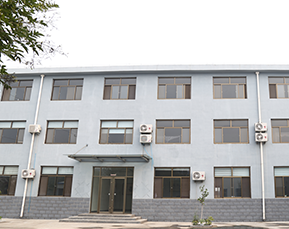 Afrikaans
Afrikaans  Albanian
Albanian  Amharic
Amharic  Arabic
Arabic  Armenian
Armenian  Azerbaijani
Azerbaijani  Basque
Basque  Belarusian
Belarusian  Bengali
Bengali  Bosnian
Bosnian  Bulgarian
Bulgarian  Catalan
Catalan  Cebuano
Cebuano  Corsican
Corsican  Croatian
Croatian  Czech
Czech  Danish
Danish  Dutch
Dutch  English
English  Esperanto
Esperanto  Estonian
Estonian  Finnish
Finnish  French
French  Frisian
Frisian  Galician
Galician  Georgian
Georgian  German
German  Greek
Greek  Gujarati
Gujarati  Haitian Creole
Haitian Creole  hausa
hausa  hawaiian
hawaiian  Hebrew
Hebrew  Hindi
Hindi  Miao
Miao  Hungarian
Hungarian  Icelandic
Icelandic  igbo
igbo  Indonesian
Indonesian  irish
irish  Italian
Italian  Japanese
Japanese  Javanese
Javanese  Kannada
Kannada  kazakh
kazakh  Khmer
Khmer  Rwandese
Rwandese  Korean
Korean  Kurdish
Kurdish  Kyrgyz
Kyrgyz  Lao
Lao  Latin
Latin  Latvian
Latvian  Lithuanian
Lithuanian  Luxembourgish
Luxembourgish  Macedonian
Macedonian  Malgashi
Malgashi  Malay
Malay  Malayalam
Malayalam  Maltese
Maltese  Maori
Maori  Marathi
Marathi  Mongolian
Mongolian  Myanmar
Myanmar  Nepali
Nepali  Norwegian
Norwegian  Norwegian
Norwegian  Occitan
Occitan  Pashto
Pashto  Persian
Persian  Polish
Polish  Portuguese
Portuguese  Punjabi
Punjabi  Romanian
Romanian  Russian
Russian  Samoan
Samoan  Scottish Gaelic
Scottish Gaelic  Serbian
Serbian  Sesotho
Sesotho  Shona
Shona  Sindhi
Sindhi  Sinhala
Sinhala  Slovak
Slovak  Slovenian
Slovenian  Somali
Somali  Spanish
Spanish  Sundanese
Sundanese  Swahili
Swahili  Swedish
Swedish  Tagalog
Tagalog  Tajik
Tajik  Tamil
Tamil  Tatar
Tatar  Telugu
Telugu  Thai
Thai  Turkish
Turkish  Turkmen
Turkmen  Ukrainian
Ukrainian  Urdu
Urdu  Uighur
Uighur  Uzbek
Uzbek  Vietnamese
Vietnamese  Welsh
Welsh  Bantu
Bantu  Yiddish
Yiddish  Yoruba
Yoruba  Zulu
Zulu drum pulley
The Essential Role of Drum Pulleys in Industrial Applications
Drum pulleys play a pivotal role in various industrial applications, particularly in the realms of material handling and conveyor systems. Known for their efficiency in transferring power and facilitating motion, drum pulleys are integral components that ensure the smooth operation of machinery in factories, mines, and other facilities.
At its core, a drum pulley consists of a cylindrical shaped wheel that is mounted on an axle. It is designed to provide a surface upon which a belt or cable can run. Usually made from durable materials such as steel, aluminum, or plastic, drum pulleys are engineered to withstand heavy loads and high tension, making them ideal for demanding environments.
One of the significant advantages of using drum pulleys is their ability to maintain tension in conveyor belts. When a belt is looped around a drum pulley, it experiences a change in direction, which can effectively manage the alignment and load on the belt. This not only enhances the longevity of the belt but also reduces the risk of slippage or wear that could lead to costly downtimes. By ensuring consistent tension, drum pulleys contribute to the efficiency and reliability of conveyor systems.
Furthermore, drum pulleys can be classified based on their function and design
. Idle pulleys serve as guide rollers that help properly align belts without providing drive support. Drive pulleys, in contrast, are connected to a motor that provides the necessary power to move the belt. Additionally, a drum pulley can come in different configurations, including crowned, flat, or tapered designs, each serving a specific purpose depending on the application needs.drum pulley

Another essential aspect is the maintenance and inspection of drum pulleys. Regular checks for wear and tear ensure that pulleys operate at optimal efficiency. Professionals use various methods to assess pulley condition, including visual inspections and measurements of diameter and alignment. Early detection of issues related to drum pulleys can prevent larger mechanical failures, safeguarding both equipment and personnel.
Innovation in technology has also influenced the development of drum pulleys. Advanced materials and design improvements have led to enhanced performance characteristics such as reduced weight, increased strength, and improved corrosion resistance. These advancements allow drum pulleys to be used in a wider range of applications, from lightweight tasks to heavy-duty operations in extreme environments.
Moreover, the global push towards sustainability has prompted manufacturers to explore eco-friendly materials and processes in the production of drum pulleys. This shift not only aids in meeting regulatory standards but also resonates with the changing values of consumers who prioritize environmentally responsible practices.
In conclusion, drum pulleys are vital components in the industrial landscape, enabling the efficient movement of materials in various settings. Their ability to maintain belt tension, combined with straightforward maintenance practices, makes them indispensable in numerous applications. As industries continue to evolve, the design and use of drum pulleys will inevitably adapt, ensuring that they remain a cornerstone of efficient material handling solutions for years to come. Whether in a factory, a mine, or large-scale agricultural operations, the drum pulley stands out as a reliable performer in the complex machinery that drives modern industry.
-
Revolutionizing Conveyor Reliability with Advanced Rubber Lagging PulleysNewsJul.22,2025
-
Powering Precision and Durability with Expert Manufacturers of Conveyor ComponentsNewsJul.22,2025
-
Optimizing Conveyor Systems with Advanced Conveyor AccessoriesNewsJul.22,2025
-
Maximize Conveyor Efficiency with Quality Conveyor Idler PulleysNewsJul.22,2025
-
Future-Proof Your Conveyor System with High-Performance Polyurethane RollerNewsJul.22,2025
-
Driving Efficiency Forward with Quality Idlers and RollersNewsJul.22,2025





























